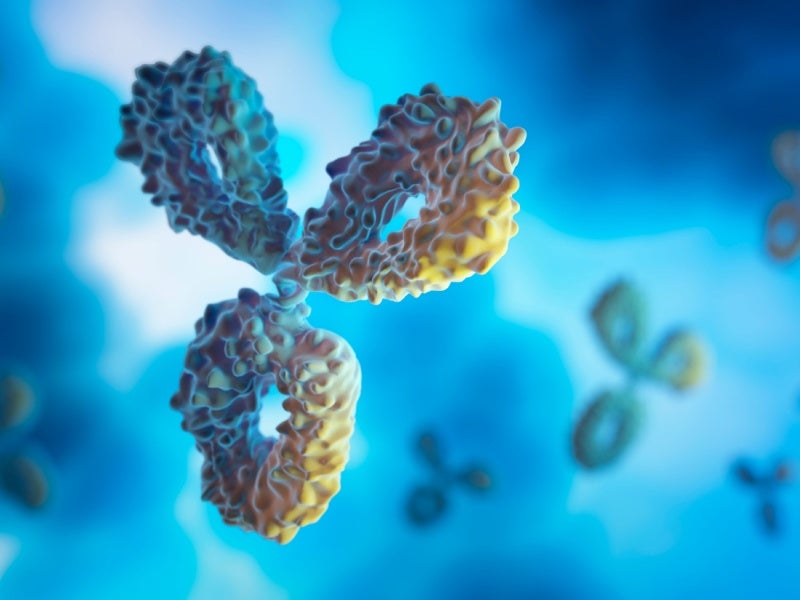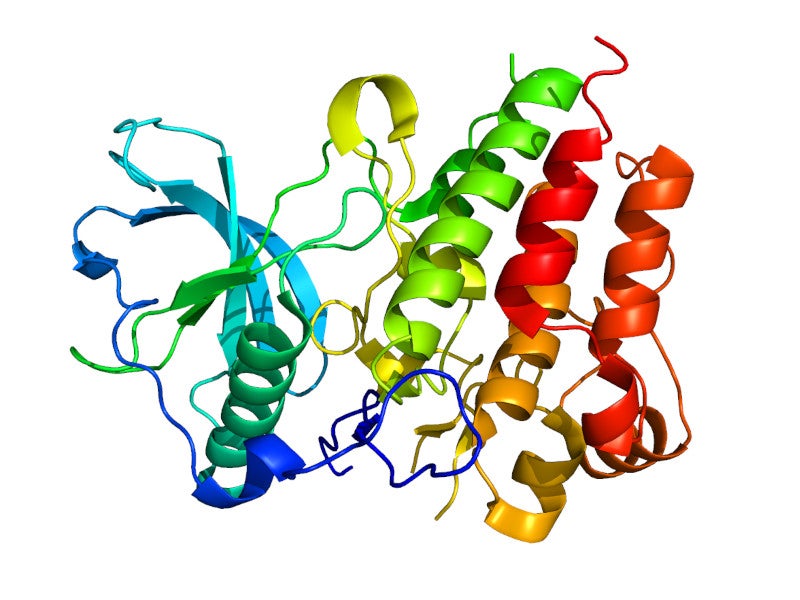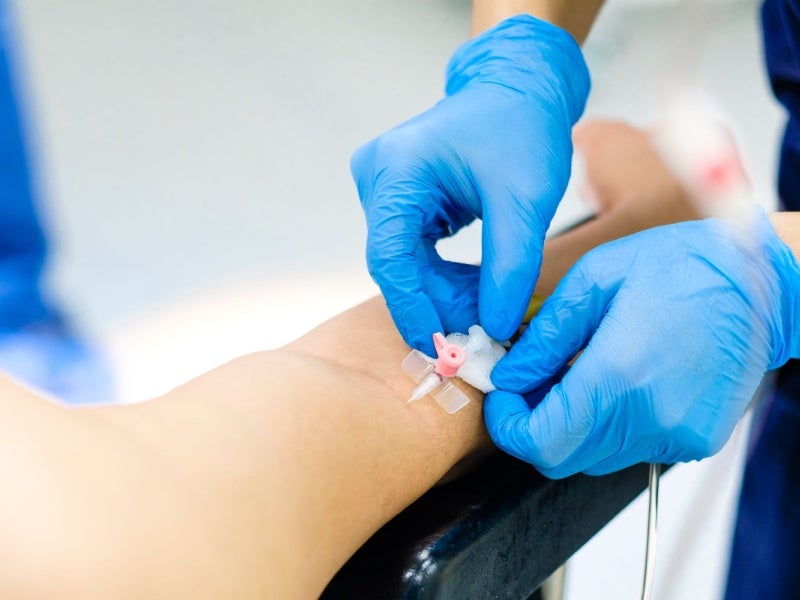NIKTIMVO™ (axatilimab) is a first-in-class anti-colony stimulating factor-1 receptor (CSF-1R) antibody indicated for treating the chronic graft-versus-host disease (cGvHD) in adults and paediatric patients weighing a minimum of 40kg who have received at least two failed previous lines of systemic therapy.
NIKTIMVO is effective in targeting the key drivers of inflammation and fibrosis observed in cGvHD making it the first approved drug of its kind to achieve this benchmark.
Syndax Pharmaceuticals, a biopharmaceutical company based in the US, secured exclusive global rights to develop and commercialise axatilimab from the Belgium-based biopharmaceutical company UCB in July 2016.
Subsequently, in September 2021, Syndax Pharmaceuticals signed an exclusive global agreement with Incyte, a pharmaceutical company based in the US, to collaboratively develop and commercialise axatilimab for cGvHD and any future uses.
NIKTIMVO is supplied as a slightly opalescent, pale brownish-yellow solution with a concentration of 50mg/ml in a single-dose vial for intravenous administration.
Regulatory approvals for NIKTIMVO
The US Food and Drug Administration (FDA) approved NIKTIMVO in August 2024, following the FDA’s acceptance of a biologics license application (BLA) for axatilimab for priority review in February 2024. The BLA was submitted in December 2023.
The FDA granted orphan drug designation to axatilimab for treating cGvHD in March 2021.
Chronic graft-versus-host disease causes and symptoms
GvHD is caused when donated stem cells or bone marrow (the graft) invade the healthy tissues within the recipient’s body (the host).
The condition frequently arises as a complication after an allogeneic hematopoietic stem cell transplant.
GvHD can also occur after the transplantation of solid organs abundant in lymphoid cells, as well as following the non-irradiated blood transfusion.
If GvHD manifests within the initial months post-transplant, it is termed acute GvHD. Conversely, if it emerges considerably later, it is referred to as cGvHD.
cGvHD can be specified by the formation of fibrotic tissue across various organ systems, predominantly affecting the skin and mucosal regions, cGvHD can inflict severe damage on the host’s tissues and organs, particularly if left untreated.
Some common symptoms include skin rash, disorders of the gastrointestinal (GI) tract such as diarrhoea and abdominal pain, liver dysfunction, and pulmonary diseases.
NIKTIMVO’s mechanism of action
Axatilimab is a humanised immunoglobulin G4 monoclonal antibody that targets CSF-1R expressed on monocytes and macrophages.
By inhibiting CSF-1R, axatilimab diminishes the levels of circulating proinflammatory and profibrotic monocytes, as well as monocyte-derived macrophages.
The effect has been supported by a decrease in nonclassical monocyte counts as per the observations of nonclinical studies involving axatilimab.
Axatilimab blocks the activity of harmful macrophages within tissues.
Clinical trials on NIKTIMVO
The FDA’s approval of NIKTIMVO was based on the outcomes of the AGAVE-201 clinical trial.
AGAVE-201 is a Phase II, open-label, randomised, multicentre study designed to assess the efficacy, safety, and tolerability of NIKTIMVO in patients with recurrent or refractory active cGvHD who have received at least two failed previous lines of systemic therapy.
The trial enrolled 241 adult and paediatric patients who were randomised to receive one of three distinct NIKTIMVO dose levels, administered at 0.3mg/kg every two weeks, 1mg/kg every two weeks or 3mg/kg every four weeks, across a 28-day treatment cycle for up to two years.
The primary endpoint was the objective response rate (ORR), as determined by the 2014 National Institutes of Health Consensus Criteria for cGvHD, by cycle 7 day 1.
Out of the 79 patients treated with 0.3mg/kg biweekly NIKTIMVO dosage, around 75% of the individuals achieved ORR within the initial six months of treatment, with a median response time of 1.5 months.
Furthermore, a sustained response at 12 months was observed in 60% of patients. Key secondary endpoints were duration of response, the percentage reduction in daily steroid dosage, organ-specific response rates, and validated quality-of-life assessed through the modified Lee Symptom Scale.
Notably, over 56% of participants surpassed the secondary endpoint with an improvement exceeding seven points on the mLSS scale.
Additionally, organ-specific complete and partial responses were recorded across all organs typically affected by cGvHD such as the lower and upper GI tract, oesophagus, lungs, liver, eyes, and skin.
Most common adverse events reported among the patients predominantly included viral and bacterial infections, musculoskeletal pain, elevated levels of aspartate aminotransferase and alkaline phosphatase, reduced phosphate and haemoglobin levels, increased calcium, nausea, headache, diarrhoea, coughing, pyrexia, and dyspnoea.






